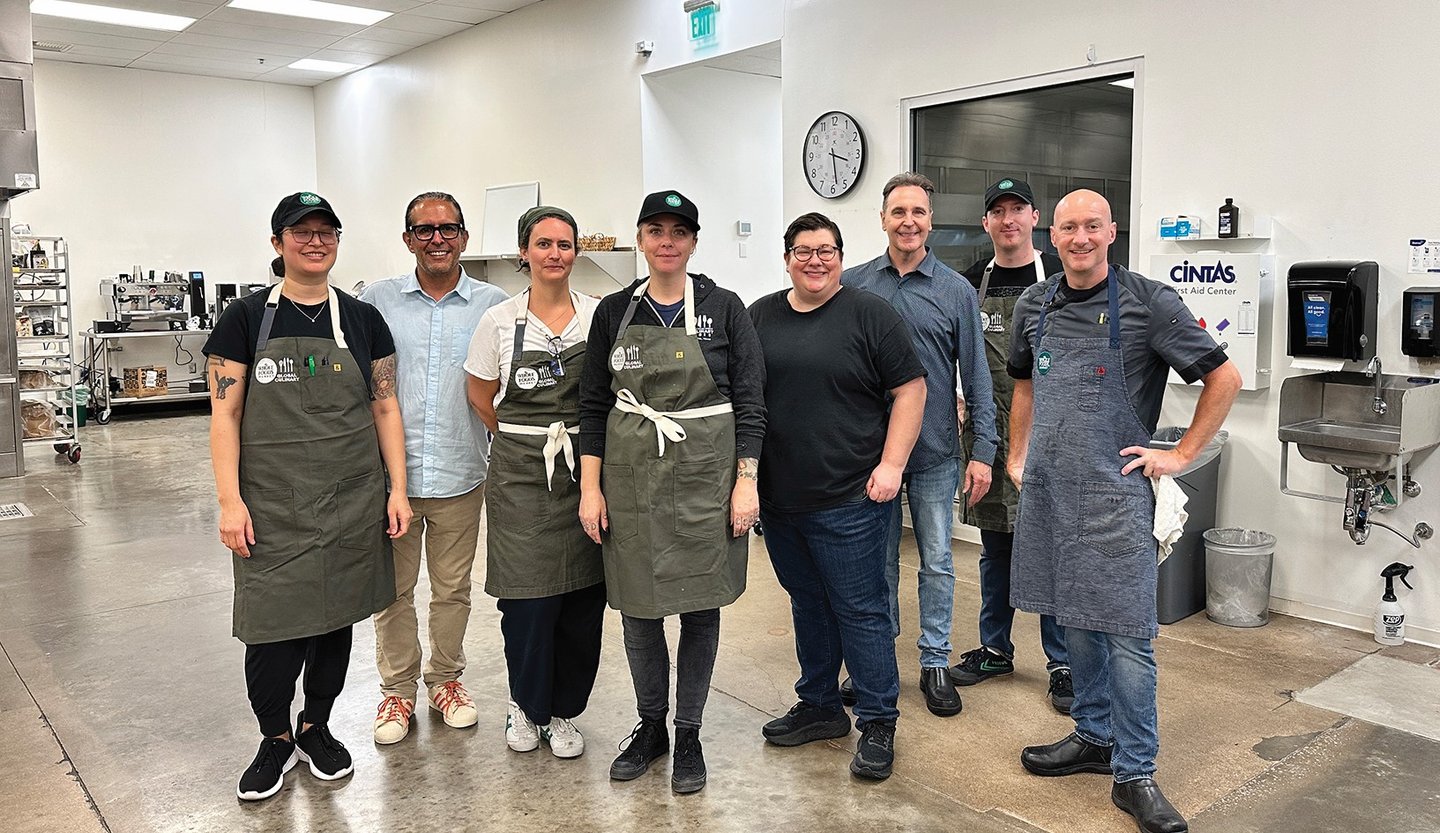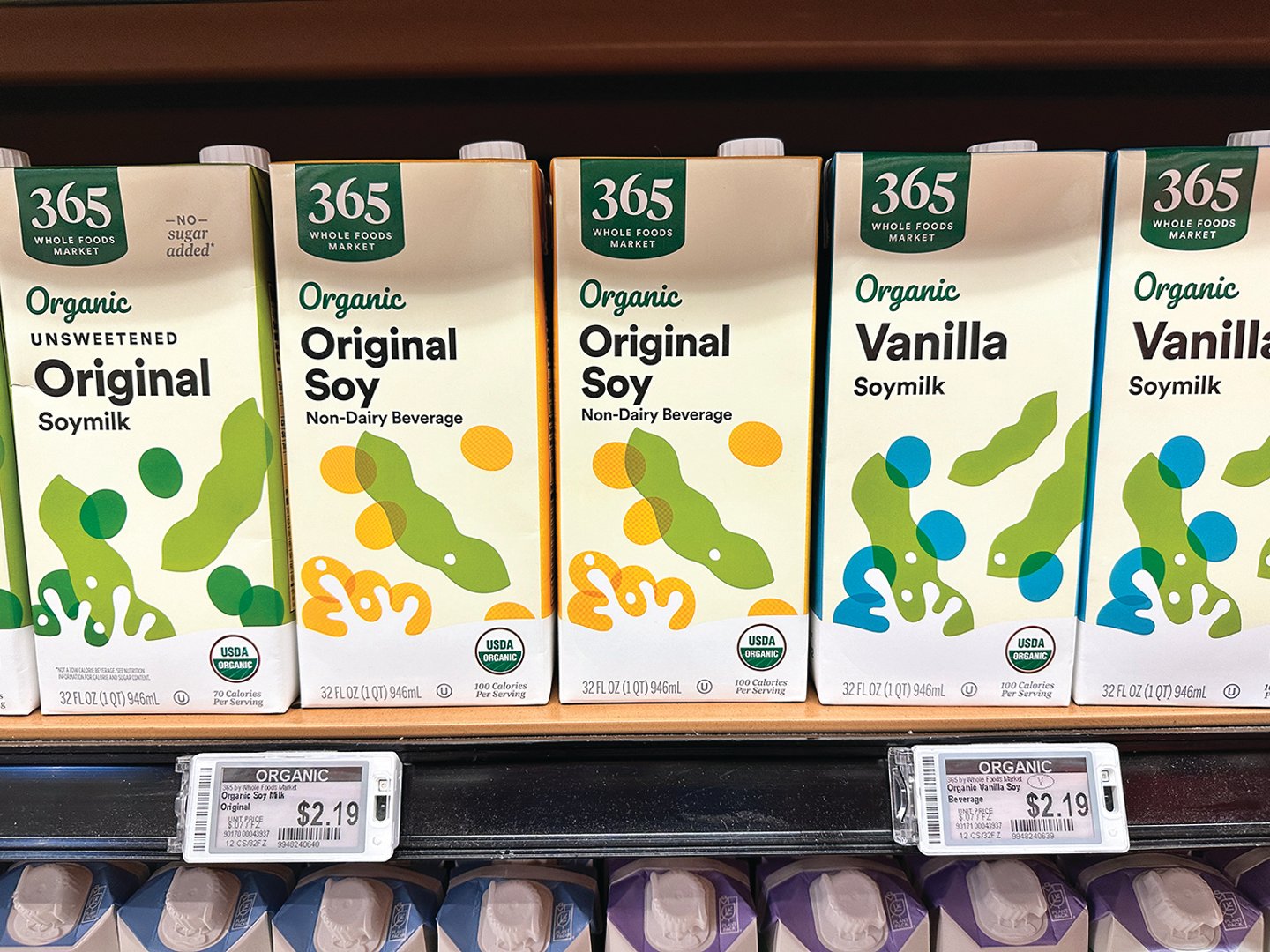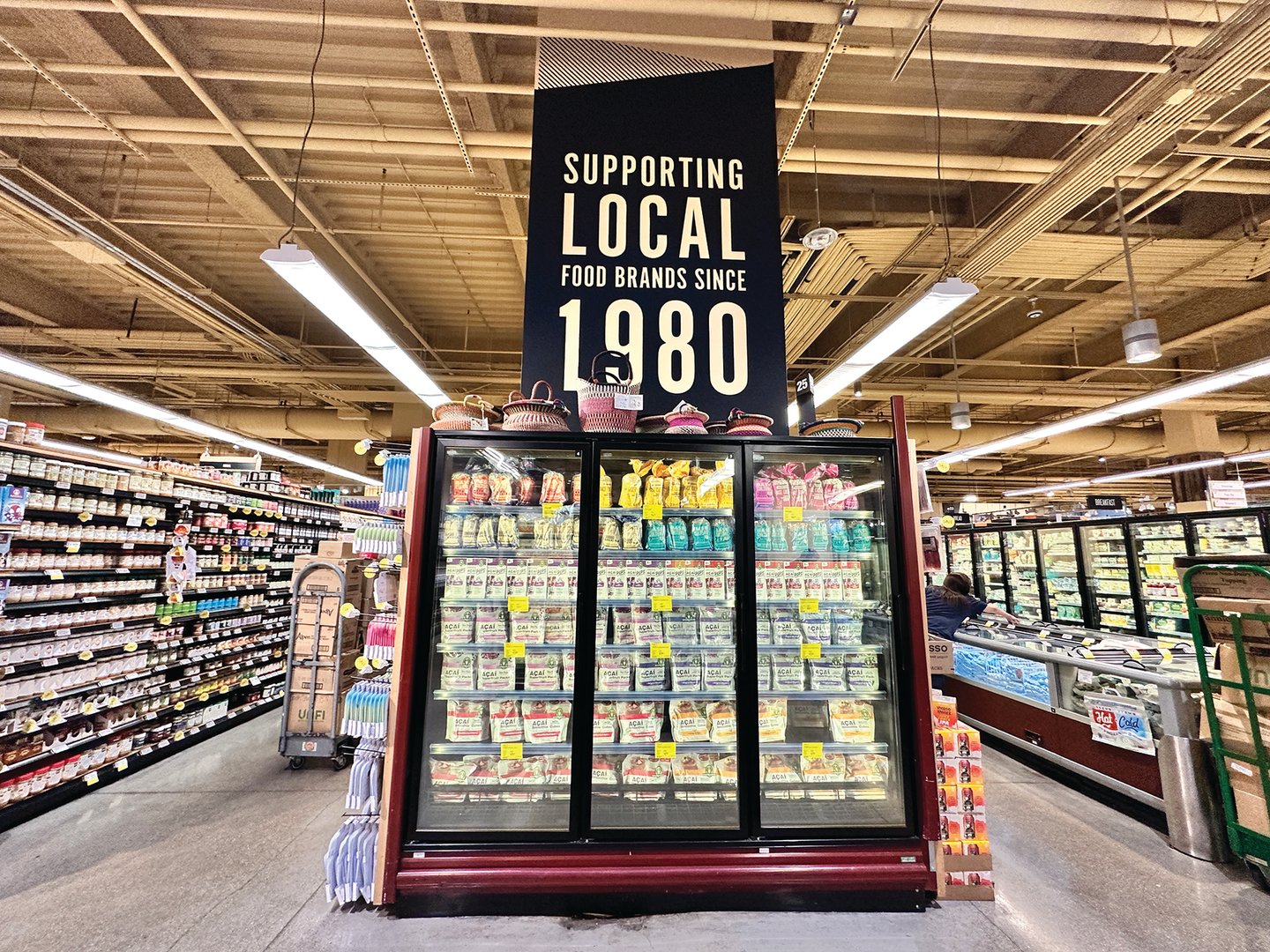Whole Foods Market Deep Dive: CEO Shares Leadership Style, Vision for Future
Last month, Jason Buechel, CEO of Whole Foods Market, spoke at Progressive Grocer’s Grocery Impact conference, in Orlando, Fla. While that was newsworthy in and of itself for all of the important things he said during his speaking engagement, it was what he did off-stage that was all the more impressive.
While he was in Florida, Buechel seized the opportunity to visit as many stores in the state as he could, including many locations in Central and Southwest Florida.
Progressive Grocer asked an employee at one of those stores what his visit was like.
“He just came right in, from the airport, I think, so casual,” the employee replied. “Just a down-to-earth, really good guy. No big team with him. He watched and listened. I was so impressed with him.”
Buechel’s leadership style — humble, open, leaning in — is part of what makes him the ideal person to take Whole Foods into its next evolution. He showcases the other facets of his authentic style — including his focus on purpose, team culture, customer experience and technology — in an exclusive interview with PG at the retailer’s headquarters in Austin, Texas.
“I’ve got the best job in the world, hands down,” asserts Buechel, who took over as CEO in 2022 from legendary founder John Mackey. “I feel so fortunate. I don’t know how all the things aligned, but I knew this was the right place to come to 10 and a half years ago. Being in a space to help ensure that we can lead Whole Foods Market, serving our higher purpose, maintaining our quality standards and culture, and helping support that for decades to come, that for me is the responsibility I feel. I’m so privileged to be able to help lead that.”
"Growing the Purpose"
Six years after Amazon purchased Whole Foods for $13.7 billion in 2017, Buechel has been tasked with injecting new energy into a beloved brand that pioneered the natural and organic grocery space more than 40 years ago.
[Read more: "How Whole Foods Market Remains an Organic Trailblazer"]
Organic today represents 6% of total food sales, and this year marks a significant milestone for the company: It’s been two decades since it first achieved organic retail certification. To date, the retailer offers more than 37,000 organic products in 535-plus stores. Whole Foods remains the only national grocer holding this certification. This year, the company entered its 44th state — Montana — and plans to open as many as 30 stores a year going forward.
Since the Amazon deal, the company has been hyper-curating and -localizing its assortments, adding 3,000 local brands in the past five years, a 30% increase between 2017 and 2022. Last year, the retailer added to its local cred by debuting an accelerator program for small producers to earn a spot on its shelves.
Today, Whole Foods — which has more than 105,000 employees (the retailer calls them team members) and generates an estimated $17 billion in annual sales — is more than just a side hustle for Amazon. The retailer is an innovation lab, as well as a large part of Amazon’s broader goal of creating a best-in-class grocery strategy. And the innovation happening at Whole Foods isn’t about just e-commerce or cashierless checkout tech, it’s about doing things authentically differently when it comes to company culture, team-building and creating a place where people can’t wait to come to work.
Buechel, a lifelong foodie with an aptitude for technology who comes from a long line of Wisconsin farmers, joined the company more than a decade ago as CIO after a stint with Accenture’s retail operations practice; he became COO in 2019. He says that what attracted him to Whole Foods was the retailer’s strong, purpose-driven culture.
“One of the things that was true 10 years ago and is still true today is that what drove me to Whole Foods was our higher purpose, our core values,” he notes. “One of the things that I learned in working with lots of other companies over the course of my career is that a lot of folks have a higher purpose and core values, but they’re words on the wall. At Whole Foods, we are living and breathing them every single day.”
Living and breathing those words — things like having the highest product standards in the industry — is something that Buechel is extremely passionate about prioritizing. Since the Amazon sale, Whole Foods has more than doubled its list of banned food ingredients (to 260-plus).
According to Buechel, a lot of his work over the past year has been focused on creating a connected and unified vision for the future of a company relentlessly committed to nourishing people and the planet. A big part of that was connecting with stakeholders across the company in a series of meetings called the Whole Conversations Tour.
“The intention there was a dedicated visit with each region,” explains Buechel. “Unlike where I typically would just go to a few stores here, a few stores there, the idea here was doing some individual store visits. Meeting with local suppliers, customers, community partners. It was basically a workshop to look at all the opportunities that we have for Whole Foods Market both in the short term and the long term.”
The Whole Conversations Tour allowed the retailer’s Culture Champions and Ambassadors (an internal education program designed to empower team members) to have a big role in developing new ideas.
“One of the things I love in our culture is that our team members control our monetary donations,” says Buechel. “Quarterly, each store has a budget that goes to community giving that our team members vote on. The Culture Champion Ambassador helps with that. We can get feedback from customers in some cases, but team members control the dollars. Instead of it being a decision made by me and the executive team, we want our stores connected to our communities and serving locally that way.”
The company has several internal team member engagement offerings, including apprenticeship programs (cheese, butchery, cake decorating, bakery) and community enrichment efforts such as Whole Kids and Whole Cities.
“One of the things that was great about the Whole Conversations Tour was that each of the groups would come up with their best ideas, both for the short term and long term,” recounts Buechel. “And then we voted as a larger group. We actually had live polling. In some cases, we said: ‘Great, we got some feedback. Let’s go pilot this or let’s roll this out to all stores and let’s see how well it’s working.’”
Buechel says that some of the longer-term ideas from the tour have been a major inspiration for what he calls “growing the purpose.”
The tour also led to a new iteration of what the company calls its Green Mission program, first introduced in the early 2000s. The program focuses on the work the company does in-store to support its commitments to the environment and other sustainability efforts. During the tour, many of the retailer’s Culture Champions had ideas about how to revitalize the program.
“There’s a lot of passion in this particular space, especially among the Culture Champions,” notes Buechel. “This was an example of one where we greenlit some tests to say, ‘Let’s start putting that focus back in some of these stores.’ So we actually relaunched the program on Earth Day earlier this year. We call it Green Mission 2.0.”
Another idea born from the Whole Conversations Tour was that of regular field trips including Buechel and the company’s Culture Champions from across the company. He says that the company plans to do three of these trips a year, and he speaks emotionally about a recent journey to Portland, Ore., where they visited one of Pacific Seafood’s oyster farms.
“It was the most magical experience,” notes Buechel. “We got to hear firsthand from the supplier side of, what does this work look like in sourcing the highest-quality oysters? And one of the ways that we got to do that is to actually go out into a boat. I learned how to shuck oysters, pack them, sort them. All the team members broke up into groups to really understand how hard the job is.”
On the same trip, the Whole Foods team visited other suppliers, including a small producer called Ground Up, which makes nut butters.
“We got to hear about the work they’re able to do in serving their purpose as a result of us buying their nut butters,” says Buechel. “They’re actually helping underserved women integrate back into society. A significant portion of their workforce are actually women who typically are unhoused, living in a shelter, and they go through a program to develop skills to return to the workforce.”
As a result of this job, one of the women Buechel met during his visit has her confidence back and is now working as a teacher’s aide, he notes.
“It’s the most beautiful story,” adds Buechel. “One of the things that is great about Whole Foods is the ripple effect that we’re having upstream, in the supply chain, around the communities that we’re able to serve.”
Broken Food System
At Grocery Impact in Orlando, Buechel spoke eloquently about that ripple effect, stressing that the grocery industry can be a force for good in changing the way the world thinks about food.
“Whole Foods Market invites you to help us start a ripple effect of change that will fix our broken food system,” he told the audience of grocery executives. “The decisions we make as a business — even the smallest ones — in how food is raised and grown today can have a profound and lasting impact on nourishing people and the planet for future generations to come.”
According to Buechel, the grocery industry stands on the cusp of a new era and must collectively commit to climate-smart agriculture.
“One of the biggest challenges our food system is facing now and will continue [to face] in the future is the climate crisis,” he said during his Grocery Impact presentation. “If we continue farming in the large-scale, mechanized way that much of the industry currently does, our topsoil is not going to have the nutrient density it needs to grow the foods we know and love today.”
To tackle this challenge, Whole Foods is working with farmers, ranchers, suppliers, scientists and other experts, as well as leading organizations, to leverage regenerative agriculture to evolve the practices used to grow, raise and produce the items that it sells. Buechel says that indoor-farming options will become more key to achieve greater redundancy in the supply chain.
“We’re going to need more alternatives,” he asserts. “We’re going to continue to grow most of our things in soil, but we are going to have to look at things like different indoor vertical-farming options. Some of that’s going to give us redundancy that we need when there are challenges that come into play.”
In 2021, Whole Foods launched the Sourced for Good seal, a program emphasizing responsible sourcing through third-party certification that has resulted in improved conditions for farmworkers and support for worker communities, and has helped ensure environmental stewardship where crops are grown. Whole Foods has leveraged Sourced for Good to improve storytelling to the customer by placing easily identifiable Sourced for Good stickers on the produce and coffee they purchase so they know when their dollars are being reinvested in the communities where their food comes from.
A focus on regenerative agriculture and responsible sourcing is all part of the retailer’s customer value proposition, which remains strong despite the mainstreaming of natural foods and the effects of inflation on consumer spending.
“The first value proposition for any customer is the homework that we do,” observes Buechel. “You come to Whole Foods Market, you know that everything that you’re buying meets our quality standards. That … is an important differentiation for us, because there’s no one else that comes close to what we’re doing in that particular space.”
He adds that Whole Foods is working to do more for its value-conscious shoppers.
“Some of them might be more occasional shoppers, but the idea is, how do we make sure that we can have offerings that can support any budget?” he notes. “This is where I’m so proud of the work of what we’ve done with 365.”
This summer, hundreds of products from Whole Foods’ private brand, 365, became available on Amazon for nationwide shipping.
“The idea here is that we’re able to have a greater impact, so folks who don’t live anywhere near a Whole Foods Market can still enjoy these great products,” says Buechel. “It’s a great price point, but it also meets our quality standards. That’s something I’m proud of because there’s so many different ways that you can feed a family on any budget throughout the store, and 365 really helps make that something that we can support.”
What’s Next
On the operational front, Whole Foods had been centralizing its leadership structure before Buechel took the reins, but he has taken the restructuring one step further, a strategy he calls “store-centricity.”
“I want all of our support team members in the organization focused on our stores, around the customer and our team member experience,” he explains. “So we have rebranded. Historically, everyone in Austin was called global support. We had regional support, which is a regional team. But now we are trying to get rid of the words ‘global’ and ‘regional,’ and instead we are ‘store support.’ We want to make sure that all of our store support team members have a connection to our stores, have an understanding of how their work impacts the front lines.”
The company is also laser-focused on improving the customer experience, building back up its post-pandemic foodservice offering, and getting a little help on the tech side from Amazon with things like phasing out legacy technology.
“How do we give our customers the best possible experience, help our customers save time? We’ve got a number of things that we are experimenting [with] in that space,” says Buechel, referencing two Whole Foods stores featuring Amazon’s Just Walk Out technology.
As CIO, he stood up the retailer’s delivery and pickup businesses before the pandemic. Fast-forward to today: Whole Foods not only offers delivery and pickup for Prime and non-Prime shoppers, but it’s also a refuge for Amazon customers who need to return items.
“That’s another area [where] our customers just thank us,” says Buechel. “To be honest, we need more capacity, because it’s such an important step for our customers being able to have us as a place that they can return those packages. And it’s great for us, because in many cases, they come in to make a purchase as well.”
The retailer has introduced a pay-by-palm system — Amazon One — at most of its stores. According to Buechel, the feedback from shoppers has been more positive than negative “by far.” Whole Foods team members are also leveraging Amazon One to take advantage of their employee discount.
Additionally, the company has been introducing electronic shelf labels to stores, and Buechel says that he’s excited about the possibilities.
“I think it has a lot of potential,” he notes. “I see challenges through many different iterations of having a technology experience that is great for the customer, great for our team members in helping support it, and it’s a right financial decision to make.”
Buechel adds that Whole Foods is also looking at deploying digital receipts technology to streamline that process, since “our customers are asking for that.”
The company’s culinary innovation center in Austin has a brilliant team working to expand its offering now that retail foodservice demand has largely returned since the pandemic. PG visited the foodservice operations center and sampled such new offerings as plant-based sushi, fresh sandwiches with elevated ingredients, and scrumptious (and all-natural) cakes and breads.
Probably the biggest operational priority for Buechel in the coming year, however, will be the phaseout of decades-old legacy technology.
“This has been one of the things we’ve been really excited about with Amazon,” he says. “It’s going to have a meaningful impact on our team members, where today, they’re doing a lot of non-value-added work. As we help make things super-easy, it’s going to make our team member engagement a lot better, but it’s also going to allow us to reinvest team member time back into our customer experience.”
He notes that the retailer has been testing some of the new tech at a store, and that it has helped improve efficiencies with regard to ordering and in-stocks.
“If we can get it right, our in-stocks increase and that’s great for customers, our shrink reduces because we’re ordering the right product, but our customer satisfaction goes up because our team members are spending more time on the floor and interacting with them as well,” explains Buechel.
Whether it’s testing new systems or products, Buechel says that he’s excited to leverage the best of Amazon to support customers, team members, suppliers and stakeholders as the retailer looks to the future.
“That’s my focus,” he asserts. “We get so many great ideas, and we have lots of ways that we can test really quickly. So our goal is to figure out which are the ones that actually can stick and scale.”











